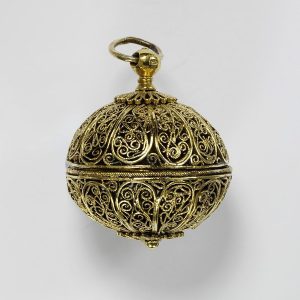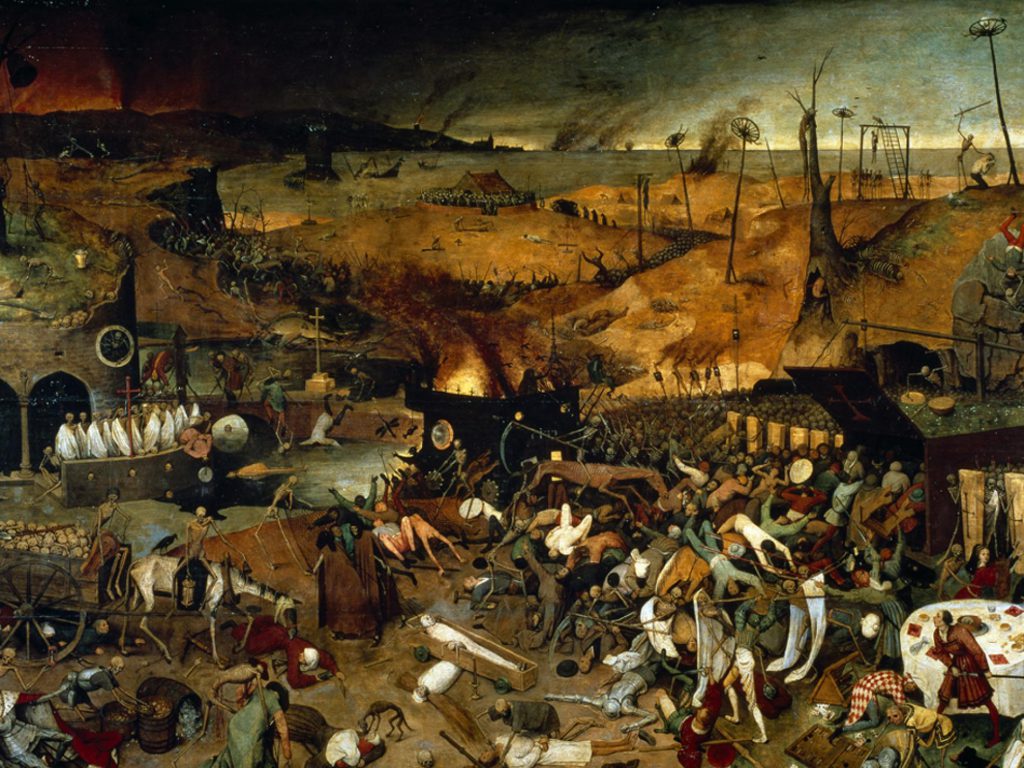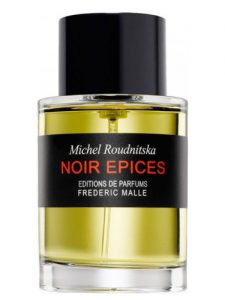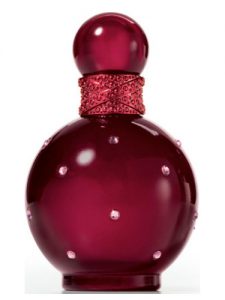What is a pomander and how did it get its name?
If you’ve attended any weddings recently you may have noticed some ball-shaped floral arrangements carried by bridesmaids or decorating the aisle . The decorative round-shaped floral arrangements, also called “kissing balls” or pomanders, have made something of a comeback. What you may not know is that the use of scented pomanders began many years ago, starting in the late Middle Ages in fact.
Historical Background
Throughout history, the importance of scent has never been denied. Mystical and powerful, scent was used as on offering and a force of attraction as well as for medicinal reasons. During the time of the late Middle Ages and the Renaissance, people thought that disease was caused by “miasma”, a noxious form of bad smells or vapors. The pomander, a ball filled with fragrant aromatic substances like spices, flowers, roots, woods and fragrant oils was believed to provide protection against sickness and death. The more potent and pungent, the better to ward off deadly disease.
If you could not smell the plague then you could not contract it, or so the thinking went.
The word “pomander” comes from the French word “pomme d’ambre”. One interpretation of this phrase is “apple of ambergris”, referring to the waxy substance used in the base of pomander recipes. Others believe the phrase to mean “apple of amber” or “golden apple” which references the fragrant fruits that were exchanged during the holidays for good luck.
Purpose
Pomanders became popular during the late Middle Ages due to the outbreak of the Black Death or Bubonic Plague, one of the most devastating pandemics in human history. Sanitation at this time was deplorable. Many streets and even some homes were filled with filth and bodily fluids. People believed that the unbearable stench which lingered throughout the cities was the cause of their deadly health crisis . There was a prevalent belief that wearing the pleasant scent of a pomander would repel the miasma which was spreading the disease.
Common Recipes
Several recipes for pomanders have managed to survive from that time. Their most common ingredients are musk, ambergris, civet and rose water to which perfumes and other spices were added. The resulting concoction would then be inserted into the pomander’s container. A pomander was typically either worn around the neck or waist. Often women would attach them to their girdles.
A Stylish Accessory
Most men and women who wore pomanders hailed from the upper class of society. Many noble men and women of the day have been depicted wearing them, including Queen Elizabeth I. While the simplest of pomanders were made of wood, some were worked in gold or silver and studded with precious stones. Some pomanders were even divided into sections into which the wearer would insert several different scents. People took great pride in their pomanders and many Renaissance portraits depict people either wearing or holding their pomanders.
Progression
Over time, pomanders began assuming the “golden apple” portrayal. By the 18thcentury, the jewelry aspect had ceased to exist and a pomander was often merely an orange studded with cloves and other spices. They became popular gifts during Christmas and New Year’s. Today some people still make this type of pomander to scent their homes, especially around the holidays.
Pomander Fragrances Today
Luckily, there are a number of great scents with different interpretations of the scent of pomander if you’re not Martha Stuart and itching to DYI.
Here are some I find interesting:
Diptyque L’Eau was launched in 1968 and was possibly the first modern fragrances to nail the appealing nature of pomander. It’s been called “the original Spicebomb” and the brand claims to have created the first unisex (i.e. genderless) fragrance with L’Eau. It’s an intriguing mix of cinnamon, clove and geranium that has die-hard fans who need their fix of this stuff especially around the holidays.
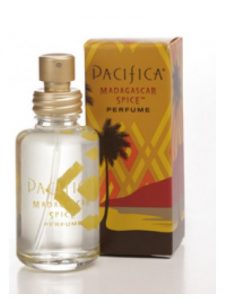 Madagascar Spice by Pacifica is an Spicy Oriental scent featuring clove, sweet orange and black pepper with clove being the star here. It smells strikingly like Bigelow’s “Constant Comment” tea and would make a nice room scent around the holidays. It also reminds me a little of those yummy cookies that the Greeks like to bake around Christmas called “melakerona” – honey, orange, clove delights that melt in your mouth.
Madagascar Spice by Pacifica is an Spicy Oriental scent featuring clove, sweet orange and black pepper with clove being the star here. It smells strikingly like Bigelow’s “Constant Comment” tea and would make a nice room scent around the holidays. It also reminds me a little of those yummy cookies that the Greeks like to bake around Christmas called “melakerona” – honey, orange, clove delights that melt in your mouth.
A spice heaven that seamlessly blends orange peel, geranium, clove and nutmeg with vanilla and patchouli is Noir Epices by Frederic Malle. Michel Roudnitska is the nose who created it. Noir Epices is a unique and very masculine, strong scent to my nose. Starting at $240 a bottle, this is no room spray fragrance. It’s the type of scent packed with mystique and you’ll either hate it or fall hard for it.
Britney Spears Hidden Fantasy is another one that whispers pomander to me but goes in a more citrusy direction. There’s also just a whisper of clove that is overshadowed by floral notes of neroli, lily and jasmine along with woody notes. It’s a lot more interesting than some of the other Fantasy flankers I’ve tried (there are 15 so far) and far better than the original Fantasy which is nothing special in my opinion.
If you’re looking for a pomander scented candle, you really can’t go wrong with Slatkin & Co. Holiday Pomander candle by Bath & Body Works or the pricier Diptyque Pomander candle. Both will give you a terrific pomander fix and an early Christmas for those who crave holiday spirit year-round.
Until the next time,


